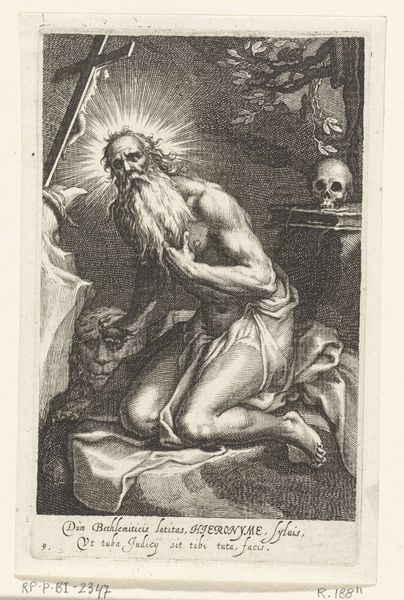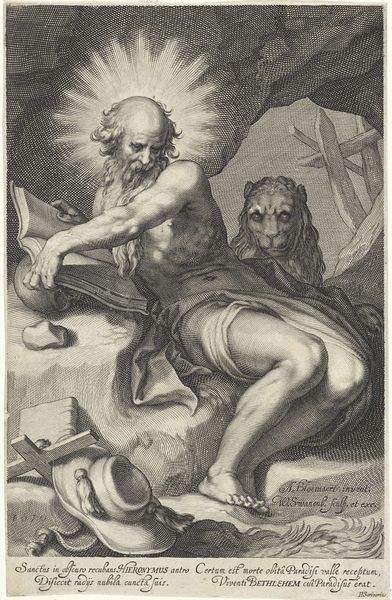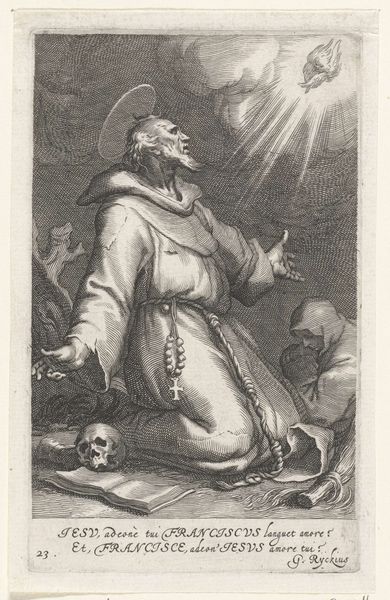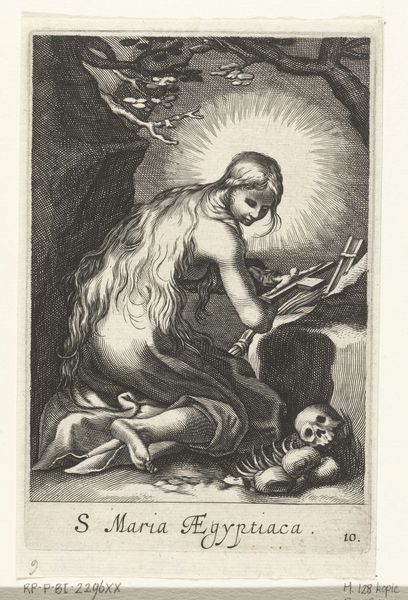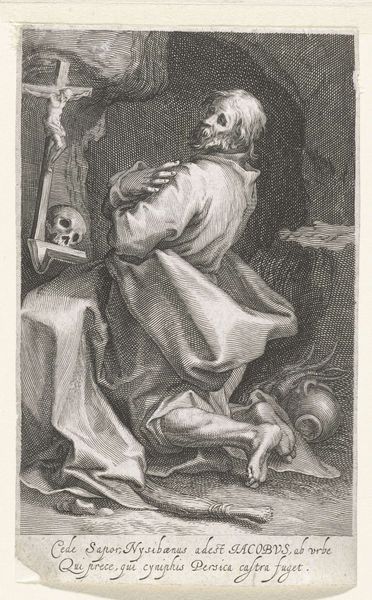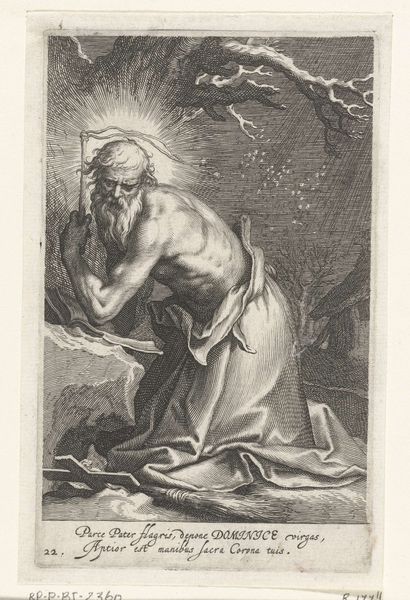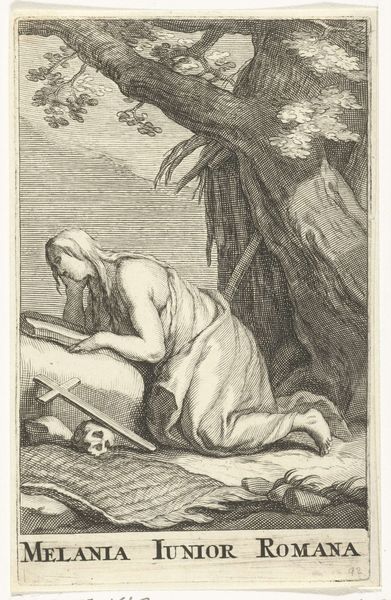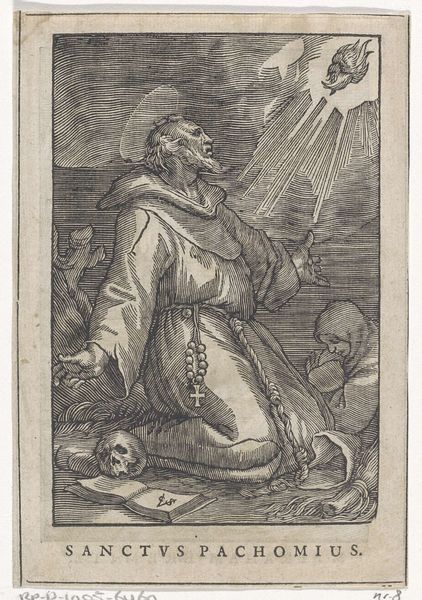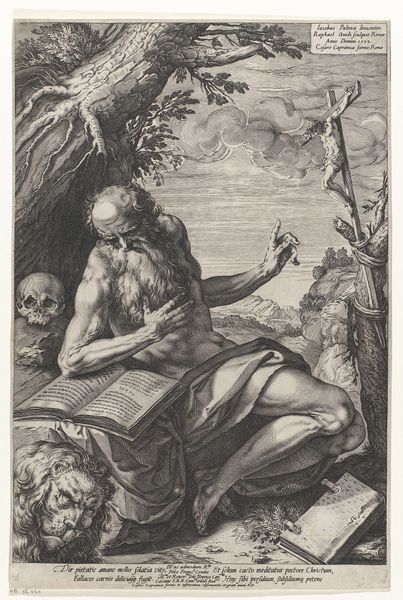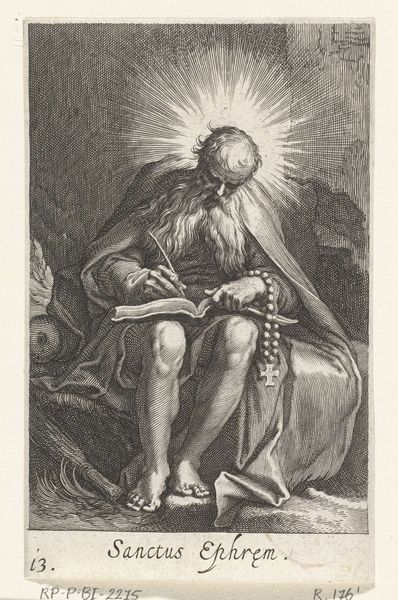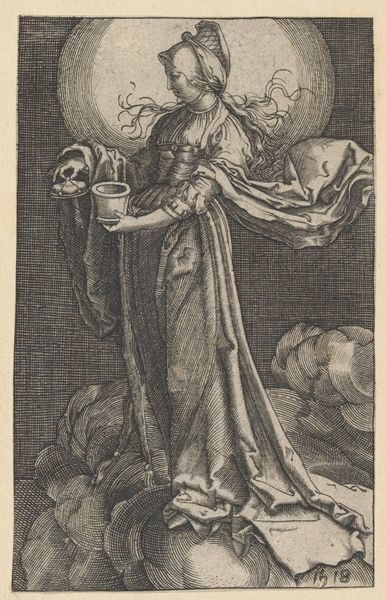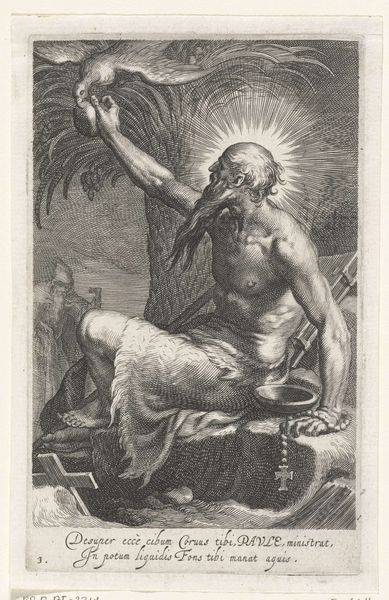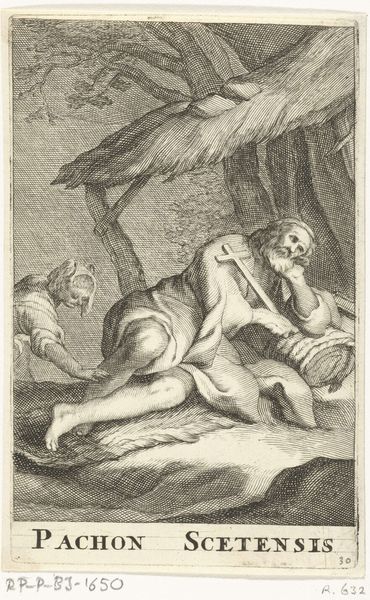
engraving
#
portrait
#
narrative-art
#
baroque
#
caricature
#
history-painting
#
engraving
Dimensions: height 144 mm, width 93 mm
Copyright: Rijks Museum: Open Domain
Editor: We're looking at "Heilige Maria van Egypte als kluizenares," or "Saint Mary of Egypt as a Hermit," an engraving dating from 1590 to 1619, created by Boëtius Adamsz. Bolswert. The contrast is stark, and the detail is incredible. I'm struck by the way Mary's hair dominates the composition. What do you see in this piece? Curator: Formally, the arrangement is carefully structured. The bright halo around the saint's head directly opposes the somber skull at her feet, creating a powerful visual binary. Bolswert has skillfully employed contrasting textures to guide the eye—notice the smoothness of Mary's skin against the rough, jagged lines of the rocky landscape. Editor: Yes, her skin is rendered so softly compared to everything else. And the linear quality overall feels very precise. Curator: Indeed. Consider how line directs our gaze: the radiating lines emanating from the halo, the serpentine curves of her hair. These are not merely representational; they construct the visual rhythm of the work. Note also how her bowed posture reinforces the downward pull established by the skull and bones, creating a dynamic tension within the pictorial space. Editor: I see what you mean. So the composition itself emphasizes her humility and the themes of mortality? Curator: Precisely. We might even see her form as a bridge, both visually and conceptually, connecting the earthly decay at her feet with the divine light above. It underscores the transitional space that her role as hermit occupies. Editor: I never would have considered the importance of the contrast to represent the transitional space; thank you for pointing it out. Curator: My pleasure. Paying attention to formal aspects enriches our understanding, showing how integral they are to meaning-making in art.
Comments
No comments
Be the first to comment and join the conversation on the ultimate creative platform.
